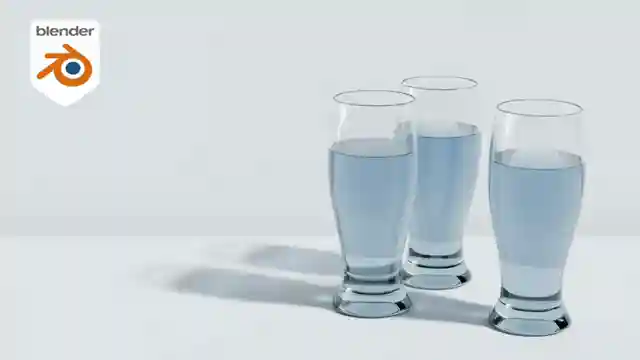Mastering Nested Dielectrics in Blender 4.0: Achieving Realistic Renders

- Authors
- Published on
- Published on
In the realm of Blender 4.0, a revolution was underway with Cycle's material system, focusing on the principled bsdf and energy conservation. But hold onto your seats, ladies and gentlemen, because we are about to dive into a topic that's been left in the shadows - nested dielectrics. Picture a glass with water inside, a tantalizing challenge that Blender is yet to conquer. The team is aware of this gap and is already tinkering with a proper nested dialectric system. This is the missing piece of the puzzle for those seeking ultra-realistic renders.
As we venture deeper into the world of physically based rendering, we encounter the intricate dance of setting up geometry and materials for nested refractive objects. The conventional methods may suffice on the surface, but they fall short of perfection. Enter the concept of relative index of refraction, a game-changer in the quest for accurate nested refractions. This metric holds the key to unlocking the secrets of realistic light behavior within transparent mediums. It's a crucial element that separates the amateurs from the pros in the world of 3D rendering.
But alas, all is not sunshine and rainbows in the land of nested dielectrics. The current manual adjustments and workarounds in Blender can only take us so far. Reflections, refractions, and overlapping geometry pose challenges that demand a more sophisticated solution. The call for a dedicated nested dialectric system within Cycles grows louder with each passing moment. Imagine a world where liquids, lenses, and layered transparent objects are rendered with pinpoint accuracy, without the need for constant tweaking and compromises. It's a vision that promises a quantum leap in the realm of digital artistry.

Image copyright Youtube

Image copyright Youtube

Image copyright Youtube

Image copyright Youtube
Watch Nested Dielectrics, the key to better fluid filled objects. on Youtube
Viewer Reactions for Nested Dielectrics, the key to better fluid filled objects.
User appreciates the shading tutorials and finds them helpful
User is working on a perfume bottle and mentions using the "remove part" method
User asks if it's possible to change the relative ior based on the ray direction for correct water to glass interaction
User inquires about managing changes in refractive index within volumes in Blender
User hopes for path guiding to be available for GPU rendering
User suggests using a texture setup that combines shaders with different ior values based on the normal direction of faces
User proposes using the speed of light instead of IOR for easier calculations
User mentions difficulties in setting up objects in Blender and compares it to Thea Render
User asks about using Shadow Caustics from Object properties button or true caustics when setting off clumping in Render properties section
Related Articles

Master Blender Workflow: Bevel Modifier, Limited Dissolve & Object Changes
Discover workflow efficiency tips in Blender! Learn about using the bevel modifier for angled edges, limited dissolve for bezier curves, and applying changes to multiple objects simultaneously. Master 3D modeling tricks for seamless design.

Mastering Direct Polygon Modeling: Retro Camera Tutorial
Discover the power of direct polygon modeling vs. subdivision surfaces in mechanical modeling with Christopher 3D. Learn how to import Adobe Illustrator profiles into Blender, tackle tessellation challenges, and master precision modeling techniques to create a stunning retro camera model.

Mastering UV Mapping for Design Precision
Learn how Christopher 3D's UV mapping technique establishes precise physical sizes for design work, ensuring uniform texel density and accurate printing outcomes.

Master UV Mapping in Blender: Tips for Precise Texture Application
Learn UV mapping in Blender with Christopher 3D: establish object sizes, apply checkerboard patterns, maintain texture consistency, project UVs, add seams for closed objects. Master precise mapping for professional design projects.
